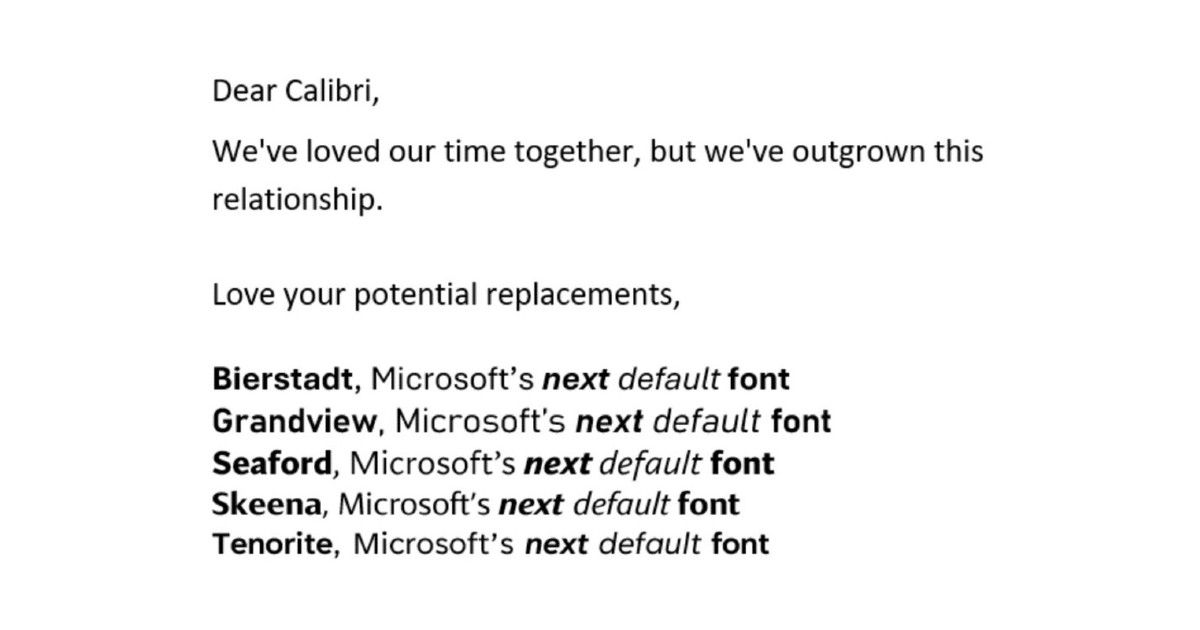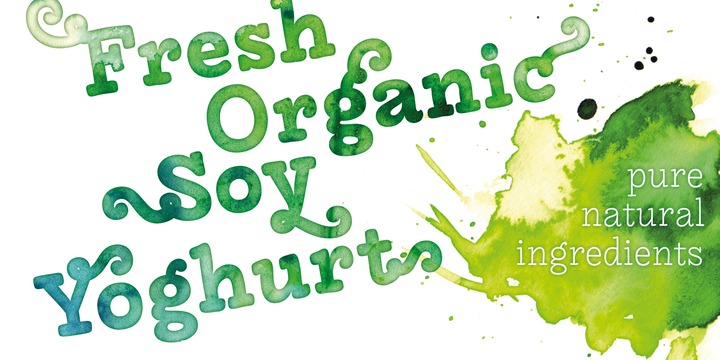

And don’t worry if the font you love best isn’t chosen as the next default all of them will be available in the font menu, alongside Calibri and your other favorite fonts in your Office apps in Microsoft 365 and beyond. Head over to social and tell us your favorite. We’re excited to share these brand-new fonts with you today and would love your input. To help us set a new direction, we’ve commissioned five original, custom fonts to eventually replace Calibri as the default. It has served us all well, but we believe it’s time to evolve. And just as people and the world around us age and grow, so too should our modes of expression.Ĭalibri has been the default font for all things Microsoft since 2007, when it stepped in to replace Times New Roman across Microsoft Office. A default font is often the first impression we make it’s the visual identity we present to other people via our resumes, documents, or emails.

Still, while default fonts may not have the same flair as some of their more eye-catching cousins (we’re looking at you, Bauhaus 93 and Showcard Gothic), they communicate a distinct personality in their own quiet way-a personality that by extension becomes our personality as well. When a font blends into the background of a user experience, people can jump right into the creative process and stay grounded in their thoughts rather than thinking about the form those thoughts take. We seldom give them much thought, and therein lies their greatest gift. Microsoft users can use these fonts from now on and share their love for their favourite one through social media.We’ve commissioned five new custom fonts– which should be the next default font?ĭefault fonts are perhaps most notable in the absence of the impression they make. Microsoft says that all five fonts are now available via the cloud across Microsoft 365 apps and experiences. The legibility of Grandview extends from use in body text to long-form reading, thanks to subtle adjustments it sports. This, in turn, creates more recognizable word shapes.ĭerived from classic German road and railway signage, Grandview is a sans serif typeface designed to be readable at a distance and under poor conditions. It contains organic and asymmetric forms to help emphasize the differences between letters. Seaford brings back the comfortable familiarity of old-style serif text typefaces. The author says that Skeena is ideal for both body text in long documents, as well as in shorter passages often found in presentations, brochures, tables, and reports.

It has been described as “humanist” sans serif based on the shapes of traditional serif text typefaces. Skeena brings a contrast between thick and thin, having modulated strokes with a distinctive slice applied to the ends of many of the strokes.


 0 kommentar(er)
0 kommentar(er)
